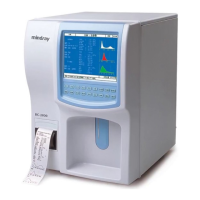Hardware
Figure 1-5 WDT
1.4.3 FLASH
The FLASH is TE28F160(2M bytes) . The boot program is stored in the FLASH,
so the FLASH is also called the BootROM. Every time the system is powered on,
the CPU first executes the boot program that initializes the system and loads the
control software from the DOM. The FLASH also contains such information as
the FPGA configuration, FPGA version and LCD contrast.
1.4.4 SDRAM
The system memory consists of two 8M-byte memories.
1.4.5 DOM
The CPU board uses a 32M DOM that is powered by a 3.3V supply (the DOM
can also be supplied by 5V supply). The DOM is only operational after the FPGA
is configured.
1.4.6 RTC
The CPU board uses a real time clock (RTC) to record the time. The RTC is
connected to the I
2
C bus of the CPU board and synchronized by a 32.768KHz
crystal oscillator. When the analyzer is powered on, the RTC is powered by the
CPU board; when the analyzer is powered off, it is powered by the built-in
battery.
1.4.7 EEPROM
The CPU board uses an 8K byte EEPROM to store such information as system
configurations and settings. It is connected to the I2C bus of the CPU and can
be written by CPU on-line.
1.4.8 LEDs
When D1 is on, it means +3.3V is functioning properly. When D9 is on, it means
+12.8V is functioning properly. When D5 is on, it means the system is reading
1-6 BC-2800 Auto Hematology Analyzer (V1.0)

